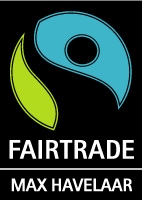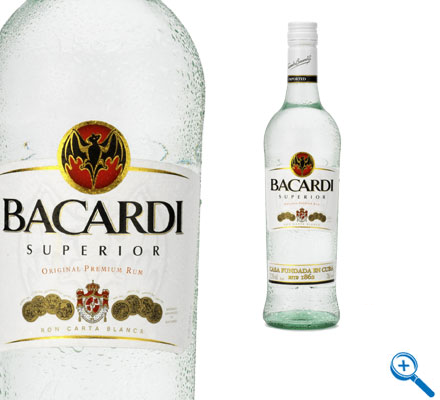HvJ EU 15 december 2011, zaak C-119/10 (Frisdranken Industrie Winters BV tegen Red Bull GmbH)
Met dank aan Peter Claassen, Roderick Chalmers en Martin Hemmer, AKD advocaten & notarissen.
Prejudiciële vragen gesteld door de Nederlandse Hoge Raad (IEF 8610).
Uit't persbericht: Diensten bestaande in het enkele afvullen van blikjes die van een als merk beschermd teken zijn voorzien, vormen geen gebruik van dit teken dat kan worden verboden.
De dienstverlener die in opdracht en volgens aanwijzingen van een derde louter afvuldiensten verricht, zorgt uitsluitend voor de technische voorzieningen waardoor deze derde gebruik kan maken van het teken dat met een beschermd merk overeenstemt
Frisdranken Industrie Winters BV („Winters”) is een Nederlandse onderneming waarvan de voornaamste activiteit bestaat in het „afvullen” van blikjes met door haar of door derden geproduceerde dranken.
Red Bull GmbH produceert en verhandelt onder het merk RED BULL een energiedrank. Voor dit merk heeft Red Bull internationale registraties verricht, met gelding voor onder meer de Beneluxlanden.
Winters heeft blikjes met frisdrank afgevuld in opdracht van Smart Drinks Ltd, een rechtspersoon naar het recht van de Britse Maagdeneilanden en een concurrent van Red Bull. Daartoe heeft Smart Drinks aan Winters lege blikjes aangeleverd met de daarbij behorende afsluitdoppen, een en ander voorzien van verschillende tekens, waarvan sommige overeenstemden met het merk van Red Bull. Ook heeft Smart Drinks het extract van de frisdrank aan Winters aangeleverd.
Winters heeft de blikjes overeenkomstig de aanwijzingen en recepten van Smart Drinks gevuld met een bepaalde hoeveelheid van het extract, heeft dit aangevuld met water en zo nodig koolzuur, en heeft de blikjes gesloten. Daarna heeft Winters de gevulde blikjes weer aan Smart Drinks ter beschikking gesteld, die deze heeft geëxporteerd naar landen buiten de Benelux. Winters heeft louter dergelijke afvuldiensten voor rekening van Smart Drinks verricht, zonder de afgevulde blikjes naar Smart Drinks te vervoeren. Voorts was levering en/of verkoop van die blikjes door Winters aan derden niet aan de orde.
Red Bull heeft voor de Nederlandse rechter aangevoerd dat Winters inbreuk op haar merkrechten maakt en heeft gevorderd Winters te bevelen elk verder gebruik van de met haar merk overeenstemmende tekens te staken. Tegen deze achtergrond wenst de Hoge Raad der Nederlanden van het Hof van Justitie te vernemen of het loutere „afvullen” van verpakkingen die zijn voorzien van een teken dat met een beschermd merk overeenstemt, moet worden aangemerkt als „gebruik van dat teken” in het economisch verkeer in de zin van de merkenrichtlijn 1 , óók indien dit afvullen geschiedt als dienstverlening voor en in opdracht van een ander.
Het Hof brengt om te beginnen in herinnering dat op grond van deze richtlijn de merkhouder het gebruik door een derde, zonder zijn toestemming, van een teken dat gelijk is aan of overeenstemt met zijn merk, kan verbieden wanneer dit gebruik plaatsvindt in het economisch verkeer, betrekking heeft op dezelfde of soortgelijke waren of diensten als die waarvoor het merk is ingeschreven, en wegens het bestaan van verwarringsgevaar bij het publiek afbreuk doet of kan doen aan de wezenlijke functie van het merk, namelijk het waarborgen van de herkomst van de waren of diensten aan de consument. Het Hof onderzoekt of een dienstverlener als Winters in dit geval zelf „gebruik” maakt van de met de merken van Red Bull overeenstemmende tekens. In dit verband herinnert het Hof eraan dat het feit dat iemand zorgt voor de technische voorzieningen die nodig zijn voor het gebruik van een teken, en daarvoor wordt vergoed, niet betekent dat degene die deze dienst verleent, zelf het teken gebruikt.
Vastgesteld moet worden dat een dienstverlener die, in opdracht en volgens aanwijzingen van een derde, alleen maar blikjes afvult die reeds zijn voorzien van met ingeschreven merken overeenstemmende tekens, zelf geen „gebruik” van deze tekens in de zin van de merkenrichtlijn maakt. Een dergelijke dienstverlener voert namelijk slechts een technisch gedeelte van het productieproces van het eindproduct uit, zonder enig belang te hebben bij het uiterlijk van de blikjes en met name bij de daarop voorkomende tekens, en zorgt dus uitsluitend voor de technische voorzieningen die nodig zijn voor een dergelijk gebruik door die derde.
Het Hof wijst er verder op dat daarbij nog komt dat een dienstverlener die in de situatie van Winters verkeert, hoe dan ook geen gebruik van de tekens maakt „voor waren of diensten” die dezelfde zijn als of soortgelijk zijn aan die waarvoor het merk is ingeschreven, als bedoeld in de merkenrichtlijn.
Zoals het Hof reeds heeft vastgesteld, heeft dit begrip in beginsel betrekking op de waren of diensten van de derde die van het teken gebruikmaakt. In dit geval staat echter vast dat de door Winters verleende diensten bestaan in het afvullen van blikjes en dat deze diensten niet soortgelijk zijn aan de waren waarvoor de merken van Red Bull zijn ingeschreven.
Weliswaar heeft het Hof met betrekking tot het verlenen van onlinediensten reeds geoordeeld dat dit in de richtlijn gebruikte begrip onder bepaalde voorwaarden ook betrekking kan hebben op waren of diensten van een andere persoon voor rekening van wie de derde handelt. Het Hof heeft namelijk vastgesteld dat de situatie van een dienstverlener die een met het merk van een ander overeenstemmend teken gebruikt om waren aan te prijzen die een van zijn klanten met behulp van de verleende diensten in de handel brengt, onder dat begrip valt wanneer dit gebruik zodanig geschiedt dat een verband tussen het teken en de verleende diensten ontstaat. 2
Het afvullen van blikjes die zijn voorzien van met ingeschreven merken overeenstemmende tekens, kan naar zijn aard evenwel niet worden vergeleken met diensten ter bevordering van de verkoop van producten die van dergelijke tekens zijn voorzien. Met name ontstaat daarbij geen verband tussen die tekens en de afvuldiensten. Het afvulbedrijf is immers niet zichtbaar voor de consument, zodat zijn diensten niet met de tekens kunnen worden geassocieerd.
Het Hof antwoordt dan ook dat de merkenrichtlijn aldus moet worden uitgelegd dat een dienstverlener die in opdracht en volgens aanwijzingen van een derde verpakkingen afvult die hem door deze derde ter beschikking zijn gesteld en waarop door diens toedoen daaraan voorafgaand een teken is aangebracht dat gelijk is aan of overeenstemt met een als merk beschermd teken, zelf geen gebruik maakt van dit teken dat kan worden verboden.
Op andere blogs:
Nederlandsch Octrooibureau (Stieren op het Europese strijdtoneel)
JIPLP (Court clips Red Bull's wings)
 Merkenrecht. We beperken ons tot een maandelijks overzicht. Vandaag heeft het BBIE een serie oppositiebeslissingen gepubliceerd die wellicht de moeite waard zijn om door te nemen. Deze lijst van 17 opposities was nog niet eerder dan nu beschikbaar, zie onder laatste BBIE serie november 2011-bericht hier.
Merkenrecht. We beperken ons tot een maandelijks overzicht. Vandaag heeft het BBIE een serie oppositiebeslissingen gepubliceerd die wellicht de moeite waard zijn om door te nemen. Deze lijst van 17 opposities was nog niet eerder dan nu beschikbaar, zie onder laatste BBIE serie november 2011-bericht hier.
 Als randvermelding. Keurmerken. Aanbestedingsrecht. De provincie Noord-Holland heeft voor de gunning van een overheidsopdracht voor levering en beheer van koffieautomaten als voorwaarde opgegeven dat het de leveringen van sociaal- en milieuvriendelijke, biologische, fair trade producten betreft. Als eis werd hierin vermeld dat de koffie- en theeconsumpties het Max Havelaar en EKO-Keurmerk zouden dragen.
Als randvermelding. Keurmerken. Aanbestedingsrecht. De provincie Noord-Holland heeft voor de gunning van een overheidsopdracht voor levering en beheer van koffieautomaten als voorwaarde opgegeven dat het de leveringen van sociaal- en milieuvriendelijke, biologische, fair trade producten betreft. Als eis werd hierin vermeld dat de koffie- en theeconsumpties het Max Havelaar en EKO-Keurmerk zouden dragen. Met dank aan Joran Spauwen,
Met dank aan Joran Spauwen,  Gemeenschapsmerk. Na een afwijzing van de aanvrage, verwerping van het beroep bij Board of Appeal, wordt het beroep van aanvrager van het gemeenschapswoordmerk
Gemeenschapsmerk. Na een afwijzing van de aanvrage, verwerping van het beroep bij Board of Appeal, wordt het beroep van aanvrager van het gemeenschapswoordmerk 



.jpg) Gemeenschapsmerk. Terugverwijzing. Gebruik van ouder merk. In de oppositieprocedure komt aanvrager van woordmerk
Gemeenschapsmerk. Terugverwijzing. Gebruik van ouder merk. In de oppositieprocedure komt aanvrager van woordmerk  Drie overeenstemmende procedures. Gemeenschapsmerk. Montagemethodiek voor lades/deuren. Bij de aanmelding van drie gemeenschapswoordmerken
Drie overeenstemmende procedures. Gemeenschapsmerk. Montagemethodiek voor lades/deuren. Bij de aanmelding van drie gemeenschapswoordmerken  In navolging van het eindvonnis IEF
In navolging van het eindvonnis IEF 





















































































